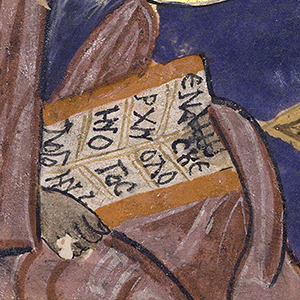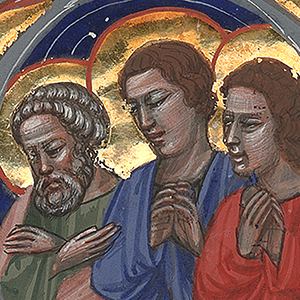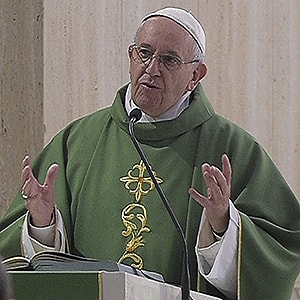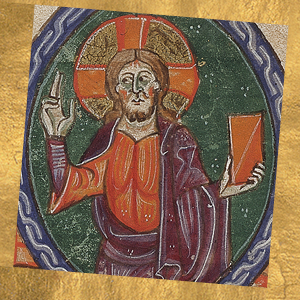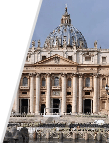St. John Damascene, priest and Doctor of the Church

Monk
John of Damascus bore a well-known name in his native city: Mansur, his Arabic surname, was the name of his grandfather who had been a minister for the Emperor Heraclius. After the Muslim conquest of Syria, his grandfather and father served the caliph as government functionaries, notwithstanding the fact that they were Christian. Some sources say that John, too worked for the caliph before he heard a low, insistent call in his heart. Perhaps he remembered the Christian monk who tutored him in his youth. Whatever the reason, John left his job and his wealth and became a monk at the monastery of Mar Saba, outside Jerusalem. He prayed, fasted, studied the Scriptures, and listened to God. In listening, he also heard the growing suffering of the People of God.
The iconoclastic controversy
For centuries, the Church had prayed with icons, or holy images that recalled the Lord’s life and the lives of the saints. But a growing tide of iconoclasm, or hostility to images, threatened this ancient practice. The Byzantine Empire was crumbling, hard-pressed by the imageless Muslims to the East and South. Whether that or other pressures were the cause, some began to rail against the use of images. Bowing to an icon was idolatry, they said. It took away from the adoration due only to God. John heard these murmurs with perturbation, feeling in his heart that such words could not be from God. But when Emperor Leo III ordered the destruction of sacred images throughout the Byzantine Empire in 726, John’s perturbation became decisive action. The monk took up his pen as if it were a spiritual sword, or perhaps a torch with which to illumine this darkness.
“God visible in the flesh”
John wrote three treatises, a “defense against those who attack the holy images.” Ironically, he was protected by the fact that he lived in Muslim territory, for from there he could speak freely against the Emperor’s policies. What came forth from his pen was an impassioned defense, not merely of sacred images, but of the Creator who did not think it beneath him to take on our flesh. God cannot be seen, John wrote, and yet the invisible God emptied himself, taking on a body, a face. From that moment on, “I have seen the human form of God, ‘and my soul has been saved.’” It was God himself who opened the door for us to make the “journey into sacred symbols,” for he was the first to show us that matter can make visible to us the very life of God.
Only God is adored. But we venerate material images, for the Son of God himself sanctified matter when he was born in the flesh. Or as John writes in words full of a piercing insight into God’s love: when I bow down before the holy images, “I do not venerate matter, I venerate the fashioner of matter, who became matter for my sake … and through matter worked my salvation. ‘For the Word became flesh and dwelt among us.’”
Praise
John fought with his pen, and this was also the way that he praised. For his defense of images was that, after all: praise of the almighty God who humbled himself so far as to make himself seen in the flesh, praise of the Creator of matter who imparted a share in his glory to the work of his hands. Praise, too, of the Mother of God who bore him in her heart, and praise of the saints who received a share in his life. “All that is yours, we venerate,” John writes, as the treatise finally becomes untrammeled prayer, “your servants, your friends, and above all the Mother who gave birth to you.”
The monk John of Damascus, a writer and a poet who composed hymns still used in the Byzantine liturgy, died around 750. He did not live to see the end of iconoclasm, but the Church did not forget what he wrote. At the Second Council of Nicaea in 787, his position was vindicated and the holy images restored. St. John Damascene is revered in both East and West as a Doctor of the Church.



